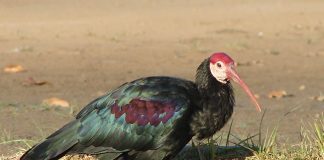
Photo: FW Archive
Good quality boars can rapidly improve the standard of piglets if you do not have the best females.
If boars have any problems in terms of their health, fertility, living conditions or genetic traits, you can end up with genetically weak offspring, sows that fail to conceive, or other problems. These, in turn, can reduce your profitability.
READ Basic infrastructure for small-scale pig farming
When buying a young boar, ask for a specimen that has grown at an above-average rate, has converted food into muscle rather than fat at a good feed-to-growth ratio, and has no physical or other imperfections, such as extreme aggression.
Novice pig farmers should start with highly marketable and popular breeds such as the Landrace or Large White.
There are other breeds such as the Duroc – red pigs some breeders use to add more desirable ‘meat traits’ and growth rates to their operation – but this form of breeding is best left to experienced farmers.
Proper procedures
A good boar should reach about 90kg at around 140 days old. Not more than about 3kg of good pig feed should be used for each kilogram of weight gained from when the pig weighs 30kg until it reaches 90kg: this indicates a good feed-to-weight gain ratio.
Remember, too, that proper deworming, hygienic living conditions, including well-ventilated housing, vaccination, and access to clean, cool water are all important factors affecting good growth rates.
A boar should not be younger than eight months when it starts working. Neither should it be used for mating more than twice a week before it is one year old. Thereafter, it can be used three times a week, but preferably not on consecutive days.
Useful tips
Good management is essential to ensure that mating takes place successfully:
- Always try match boars to sows of a similar size;
- Try to undertake mating in the boar pen or in a pen familiar to the boar;
- Always remove dangerous obstacles and ensure that the floor is made of a non-slip material such as rough or rippled concrete;
- Try to be present in the mating pen for a few minutes while the boar gets used to its surroundings (if it is not his own pen);
- Keep a hard wooden board handy to separate the boar and sow if they appear to want to harass each other;
- Speaking gently, try edge the sow’s head towards a corner of the pen while a helper positions the boar behind it. Do not ‘lift’ the boar to mate, but you can move the sow’s tail to the side if necessary;
- Let the boar mount the sow only once properly and then allow a few minutes of interaction between the pigs. Repeat the mating 12 hours later and every two to three days thereafter if the boar refuses to mate the first time.











